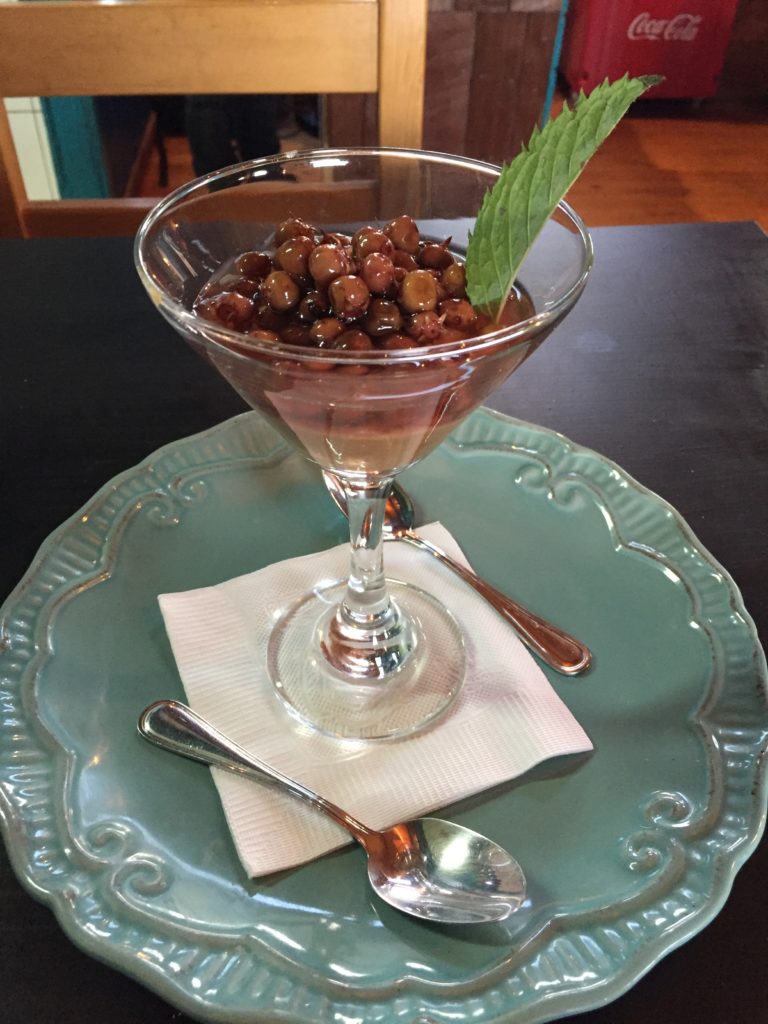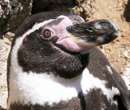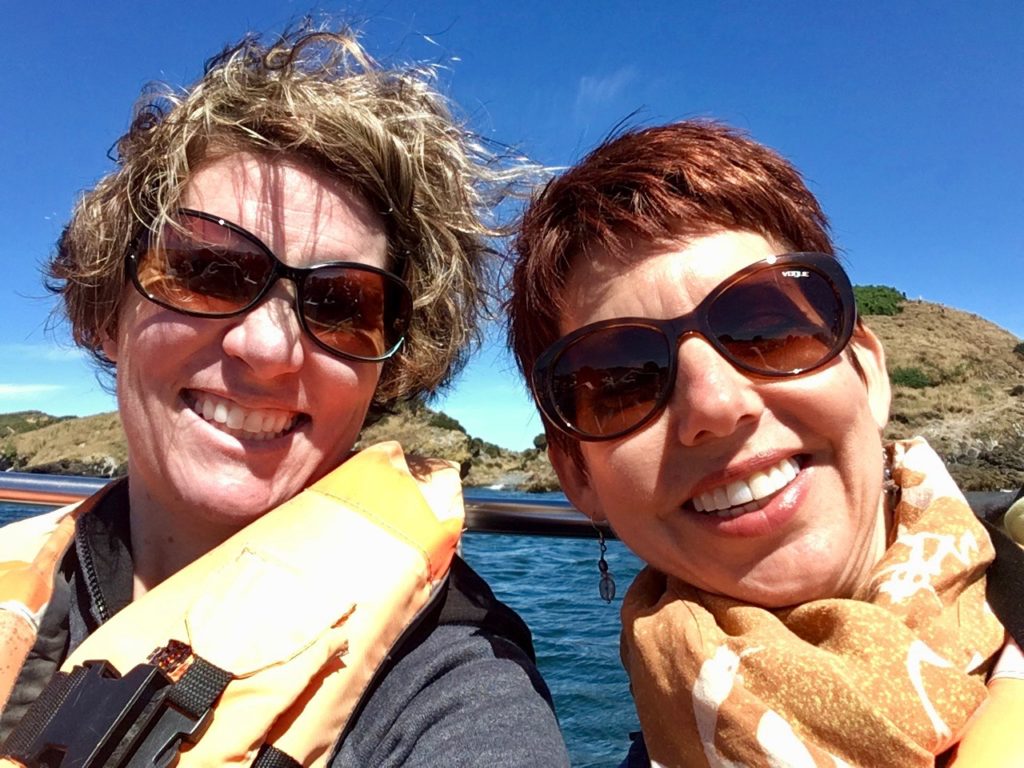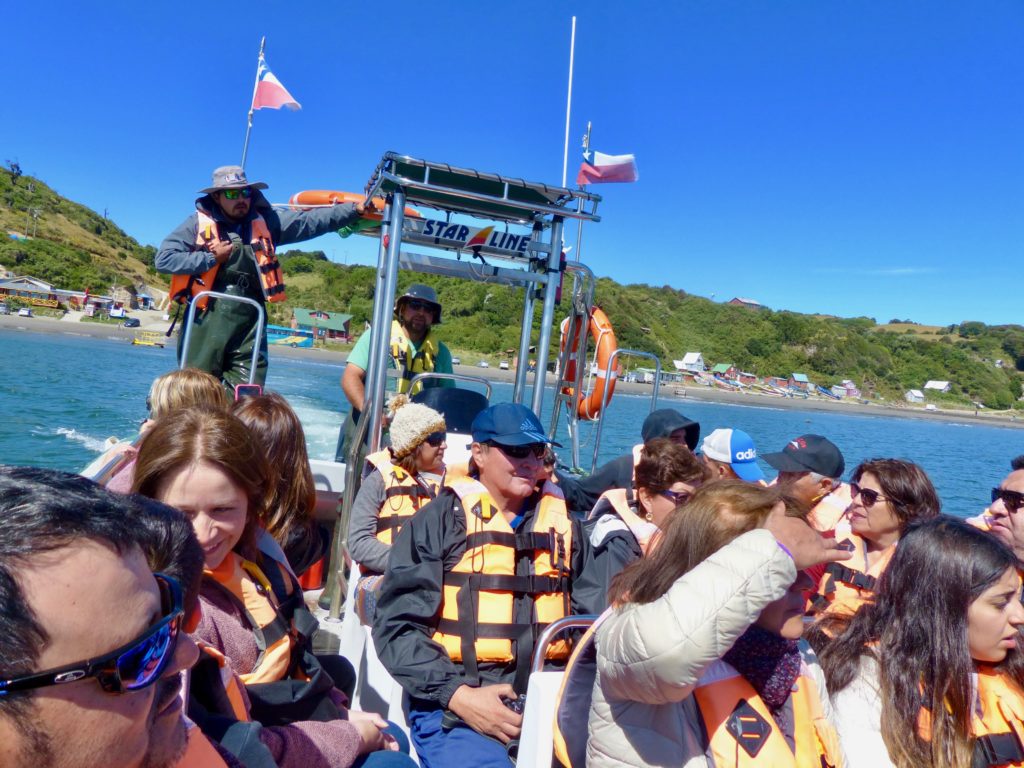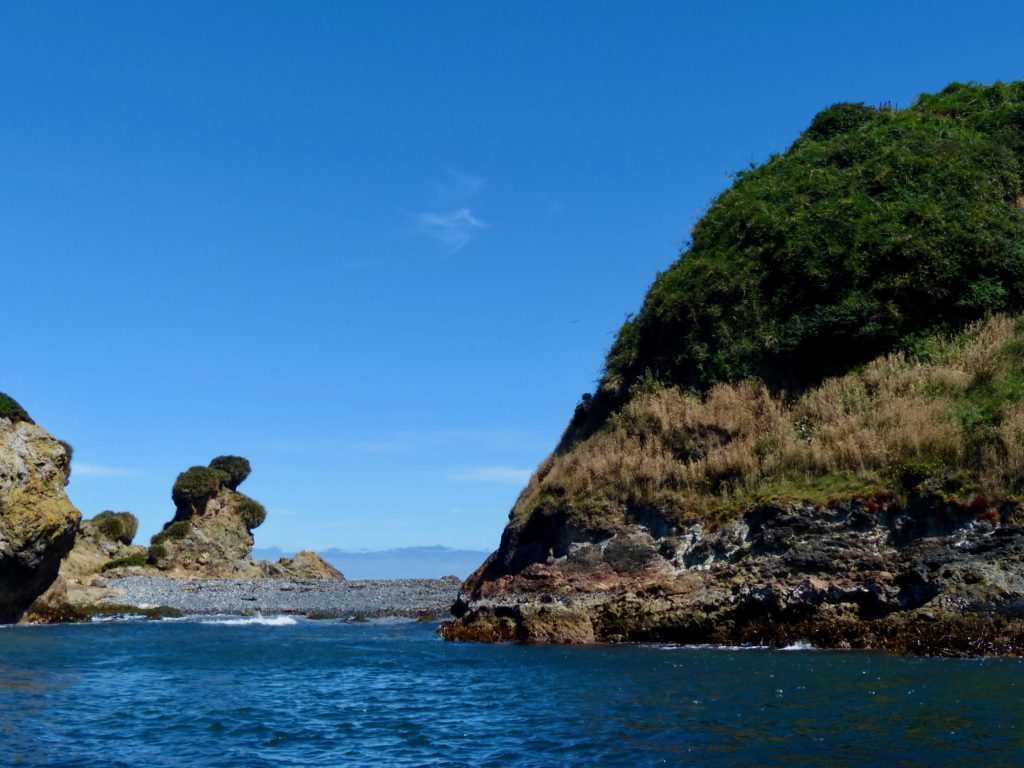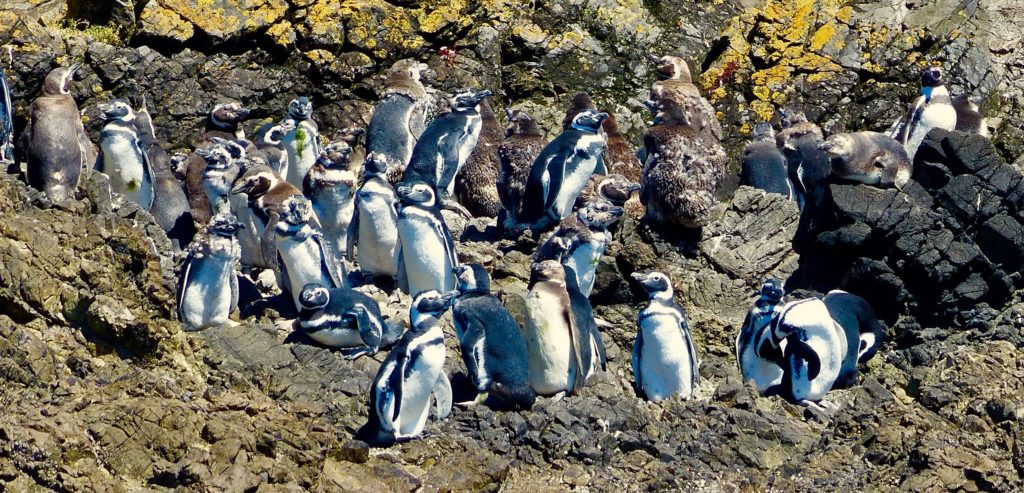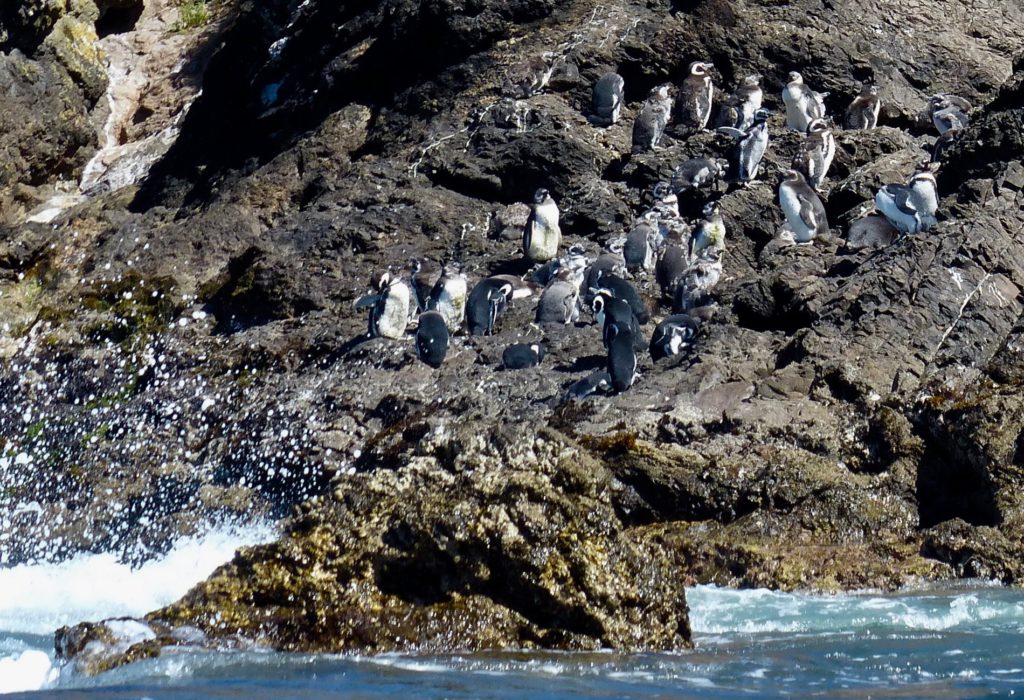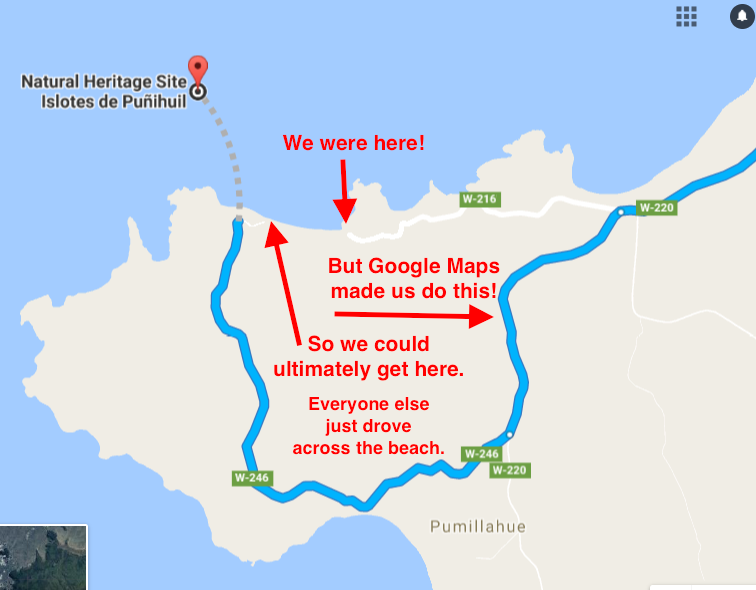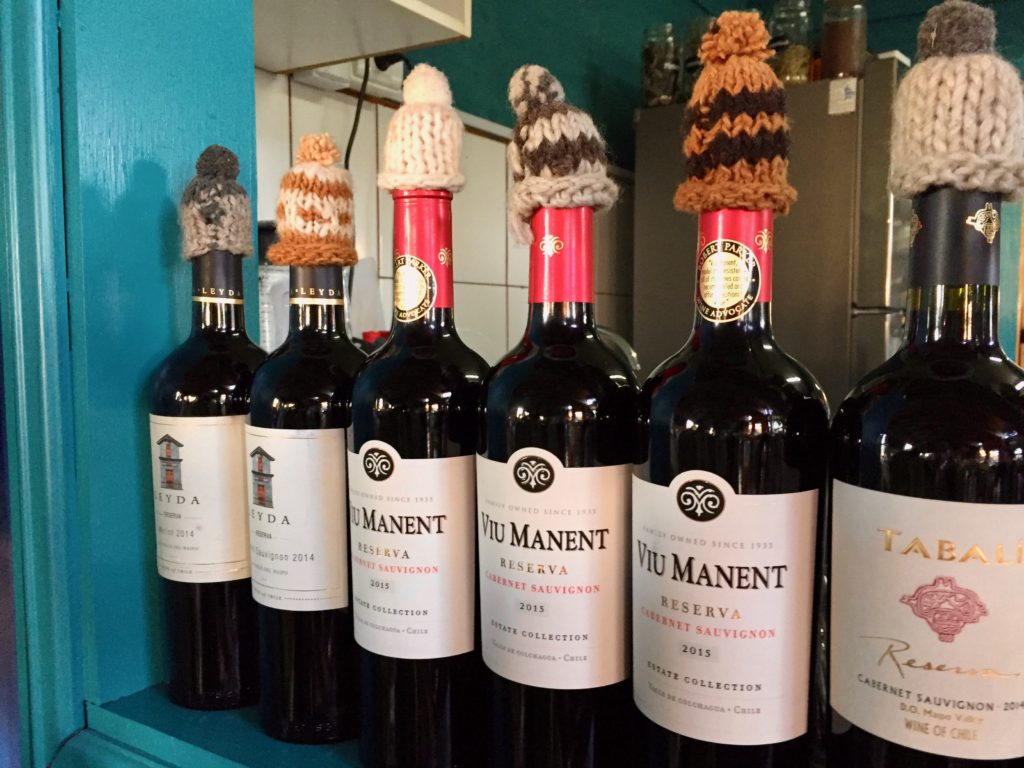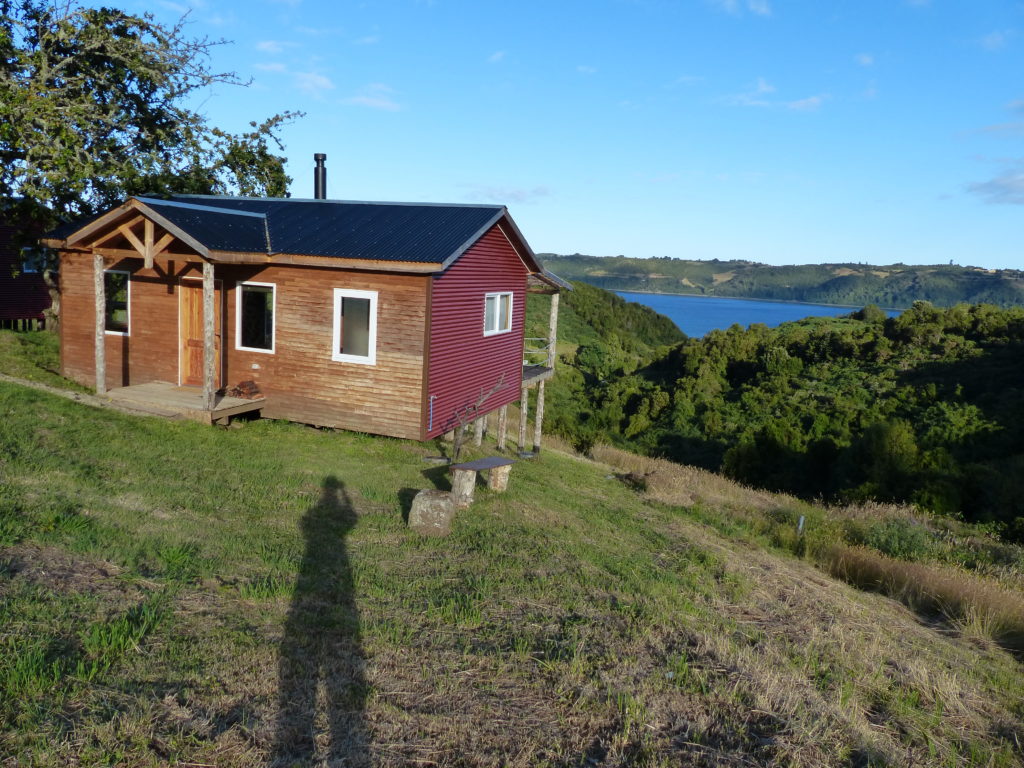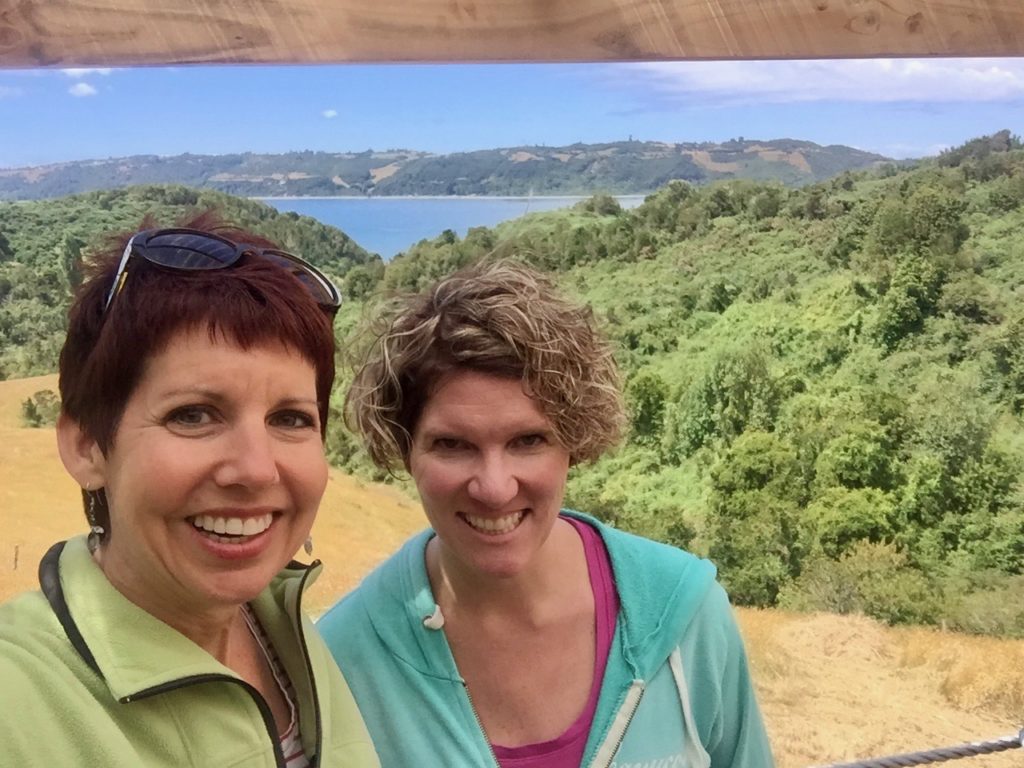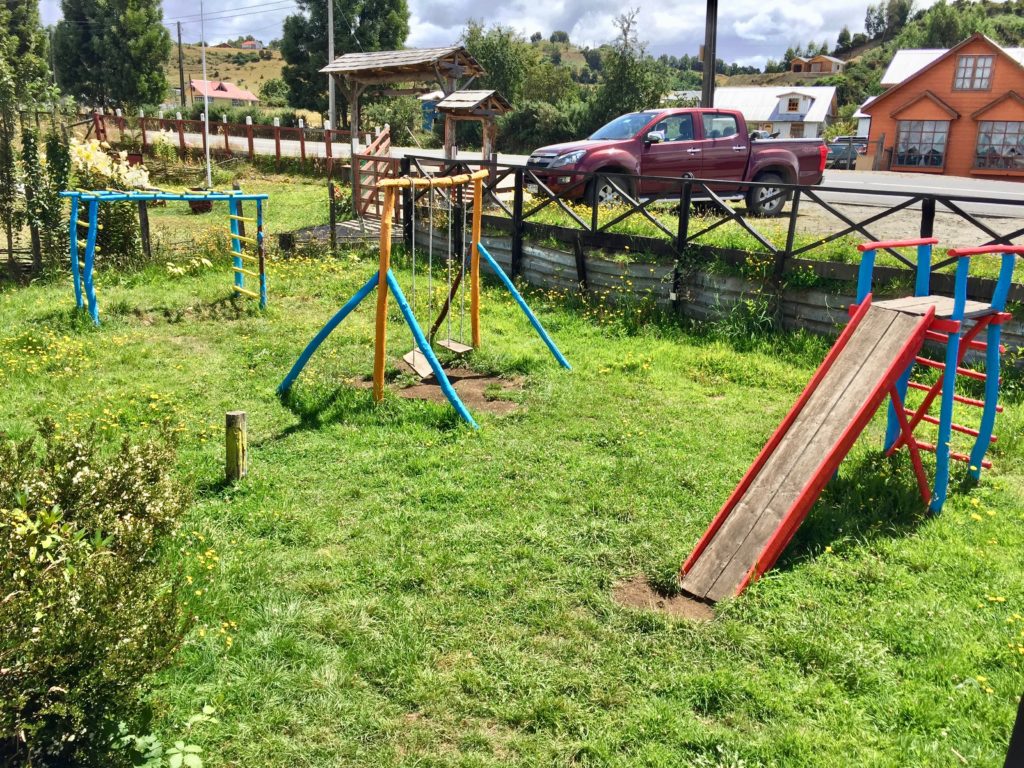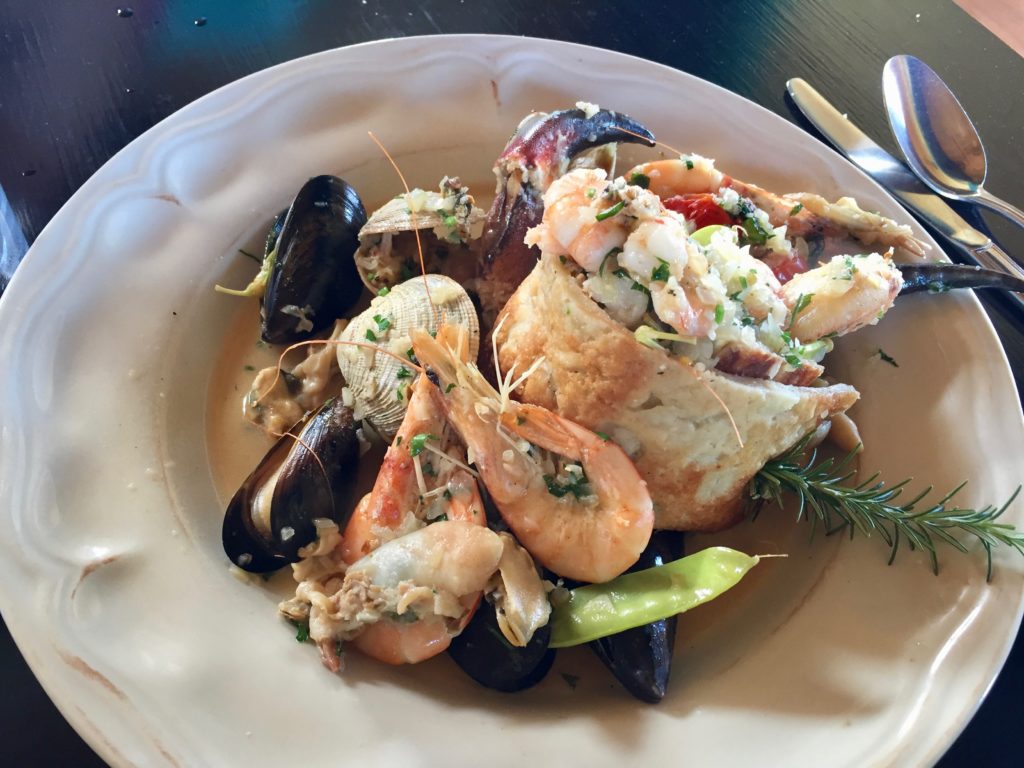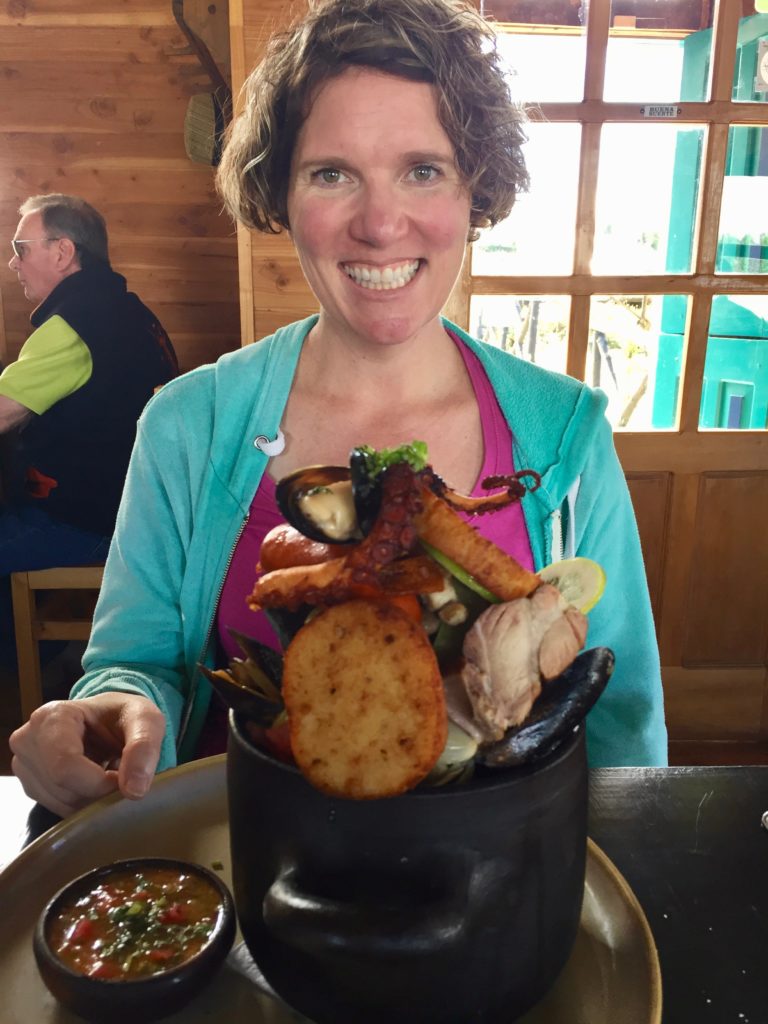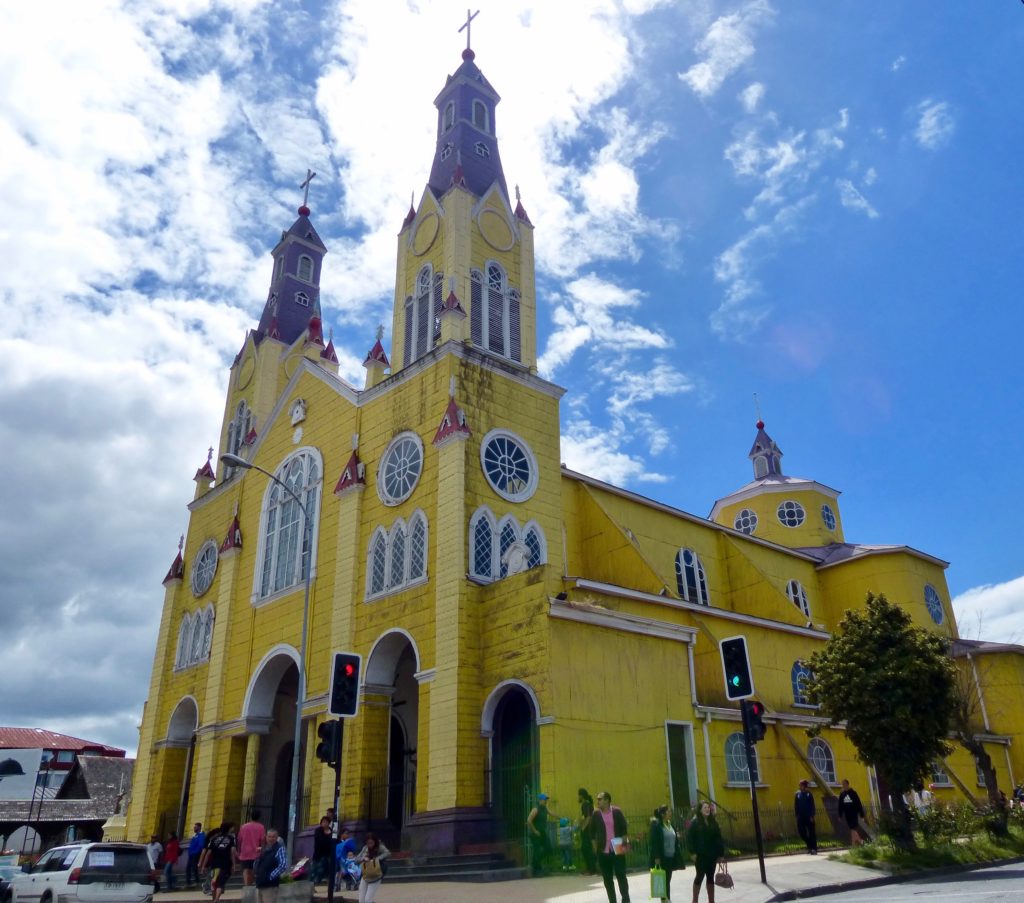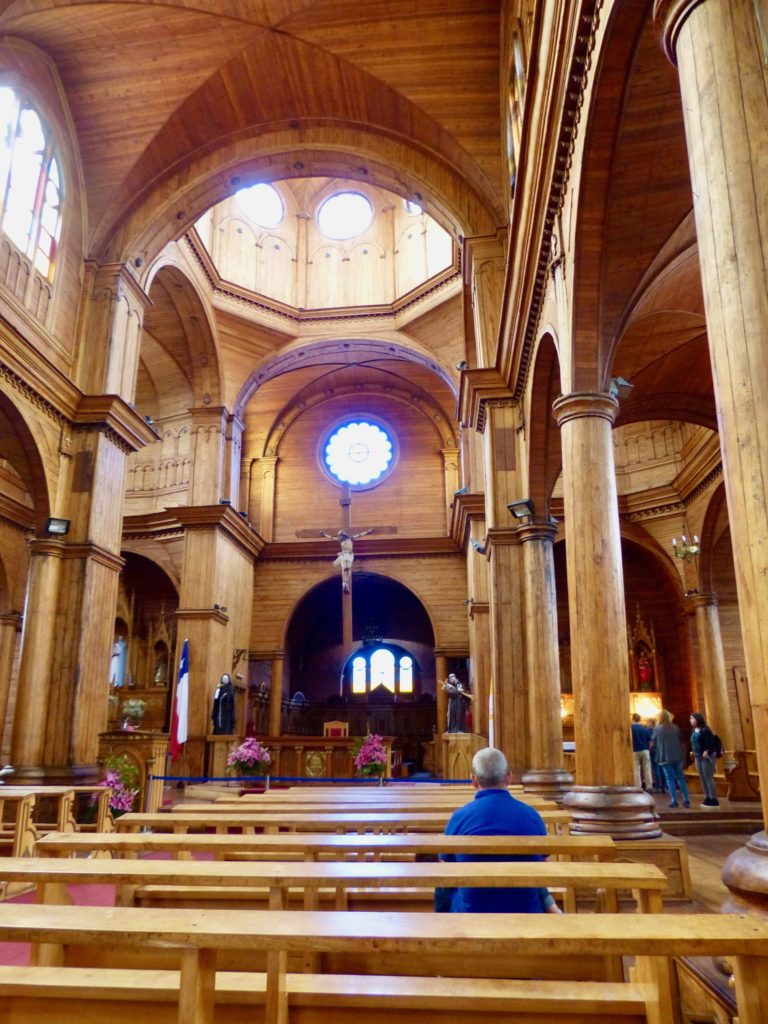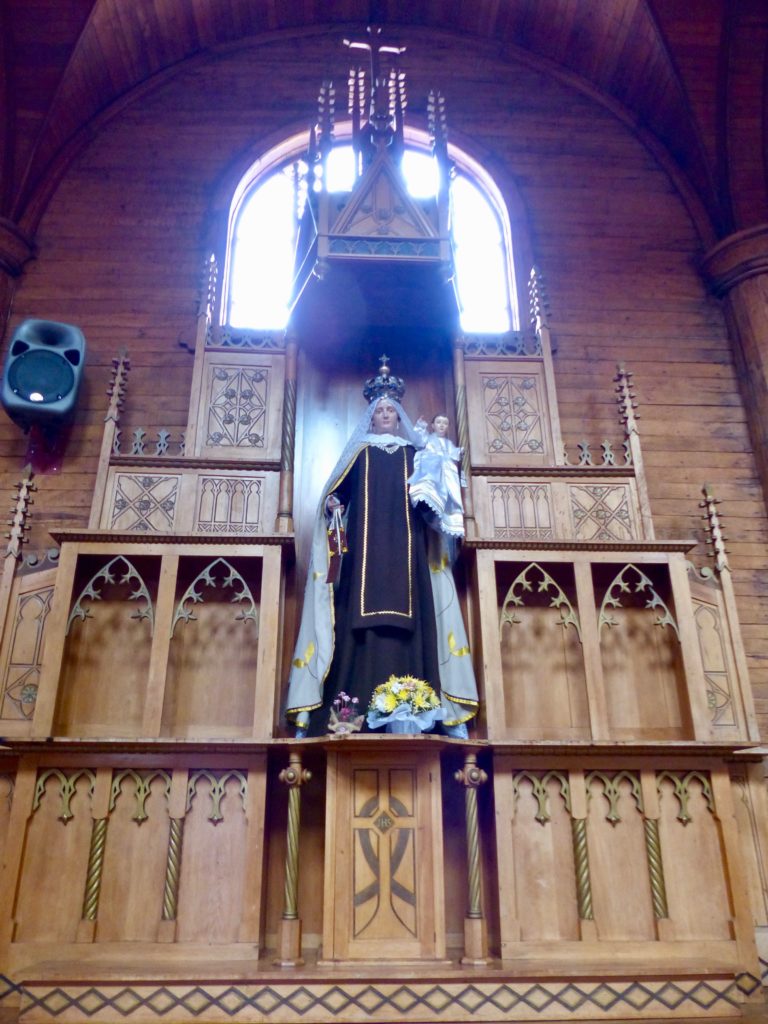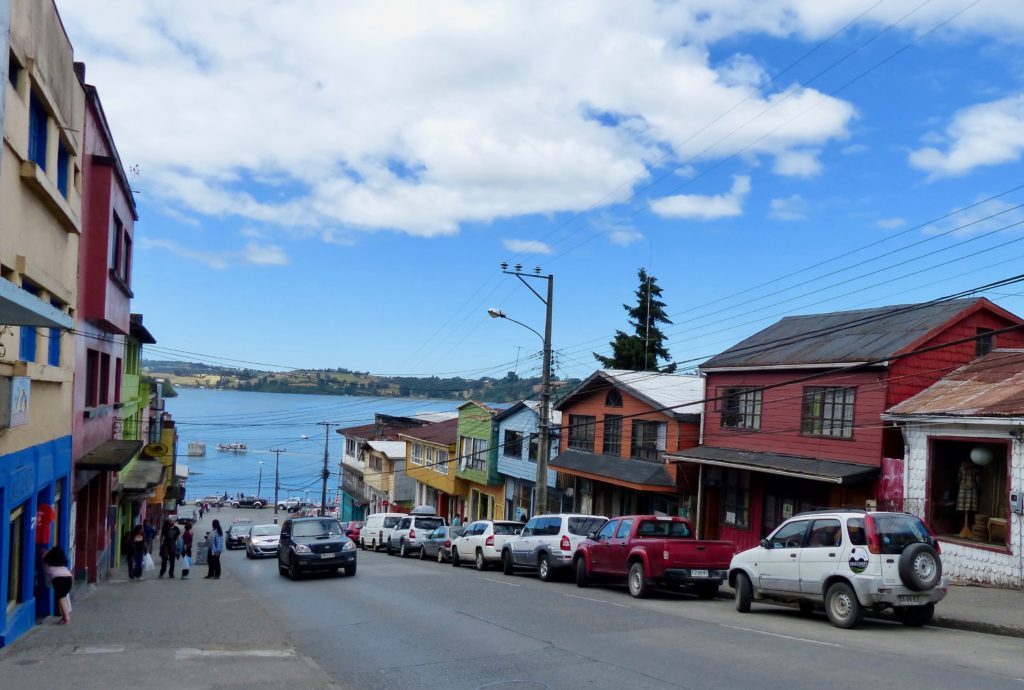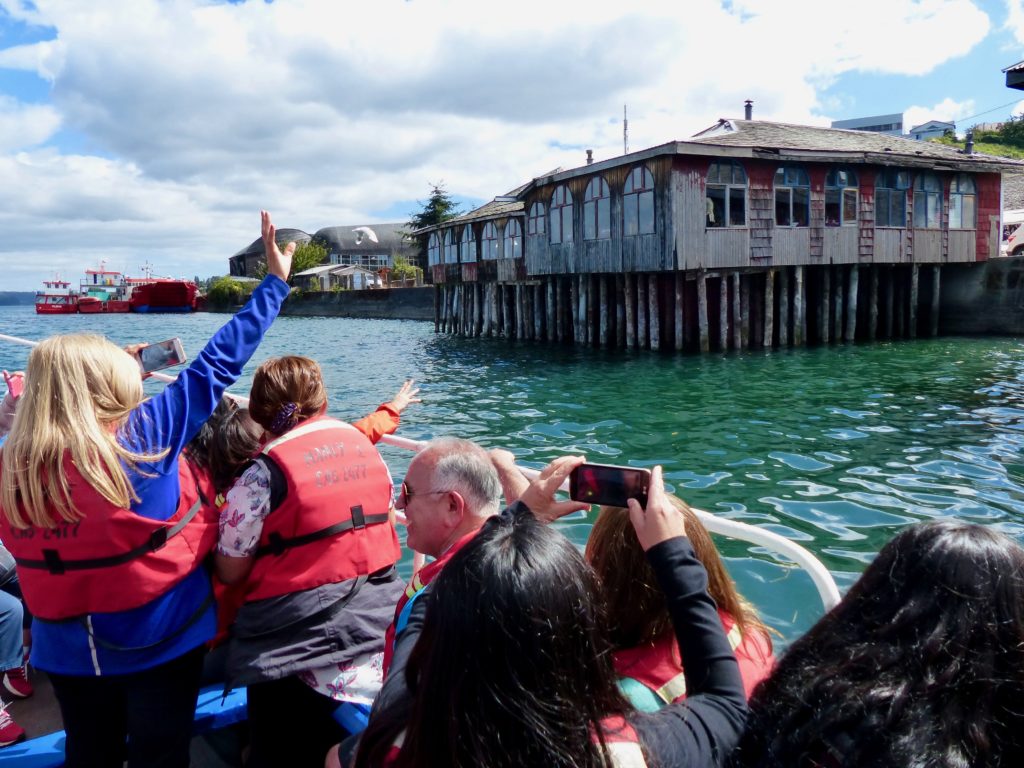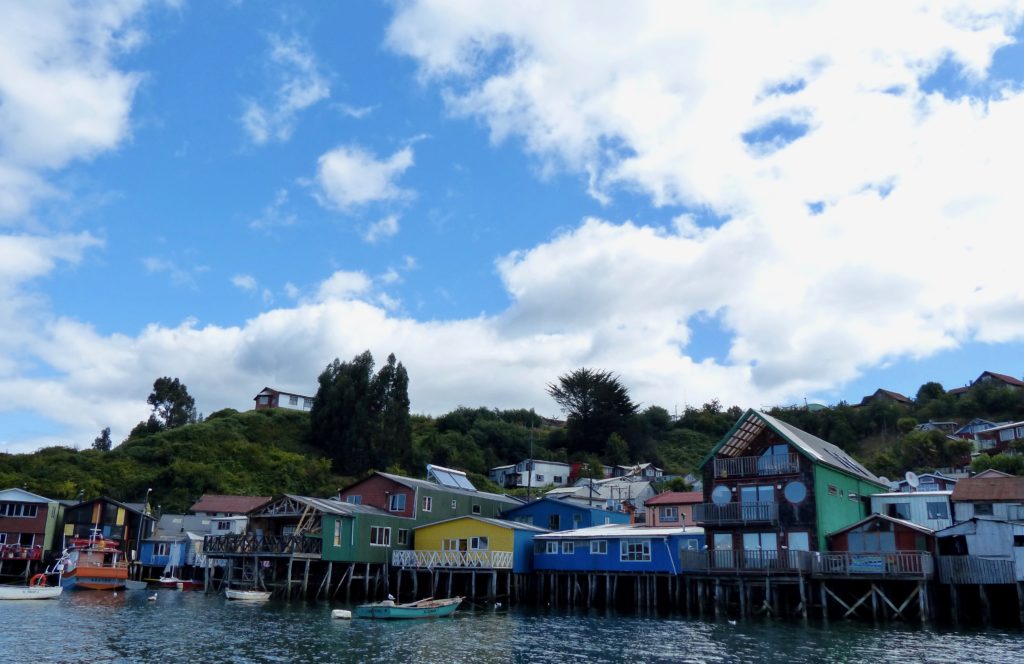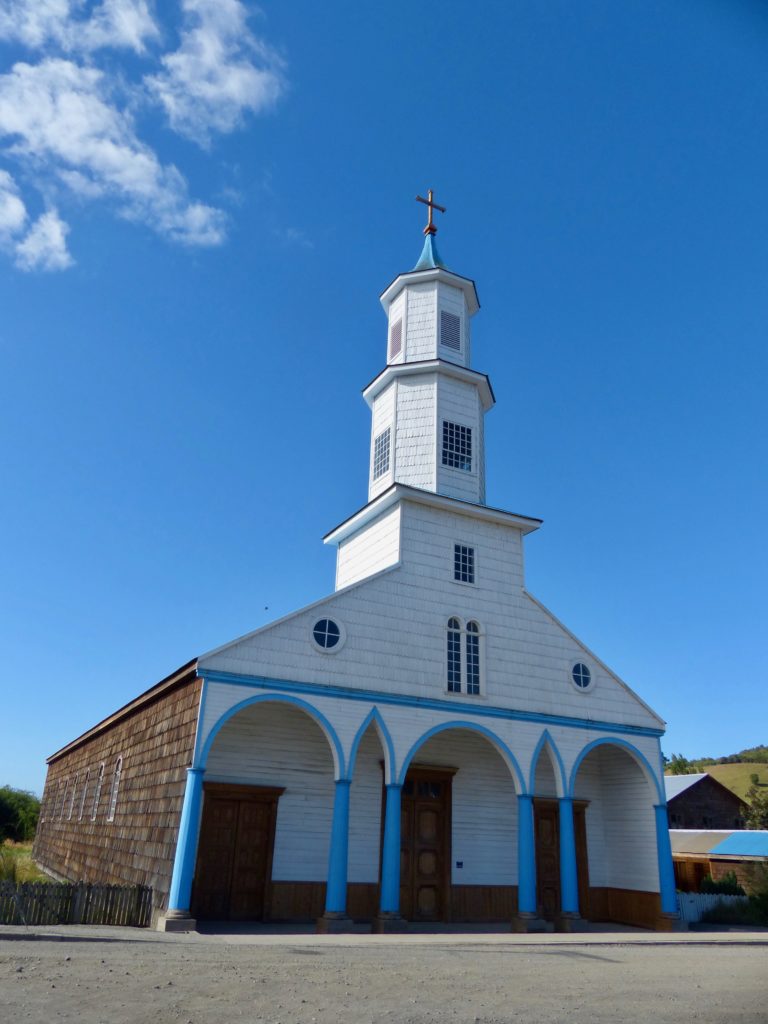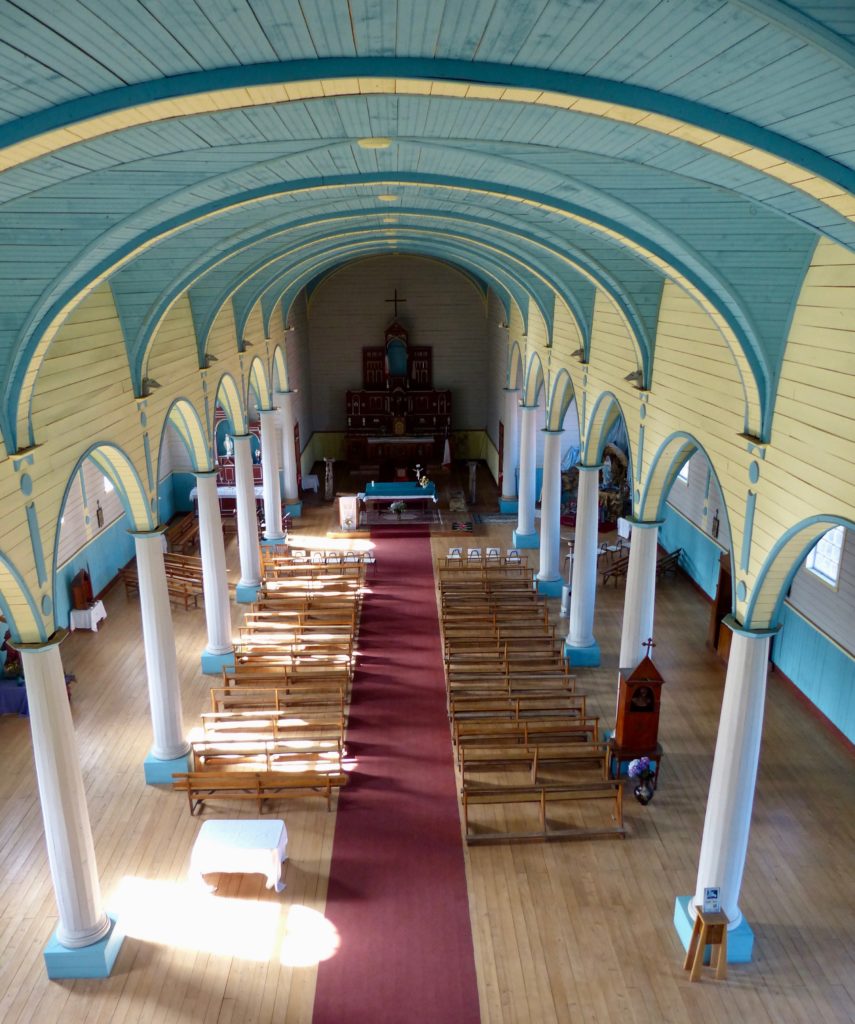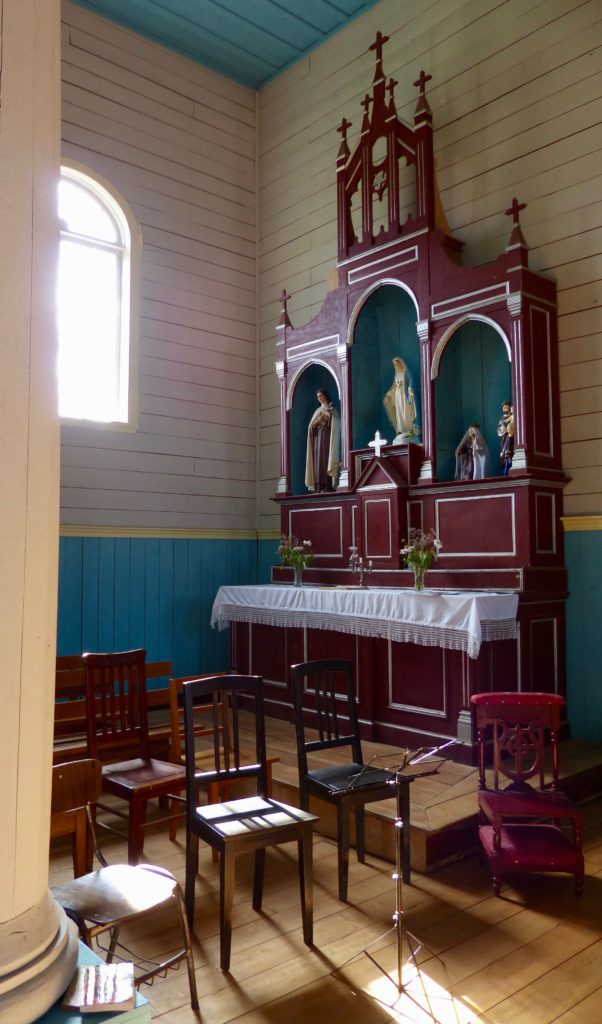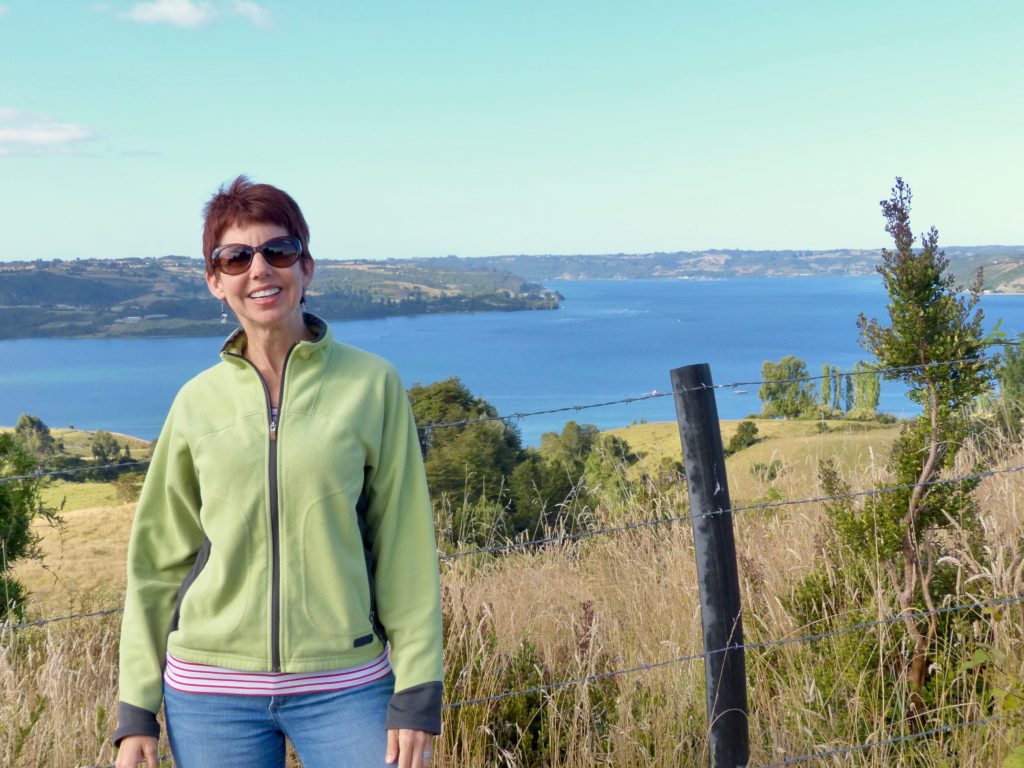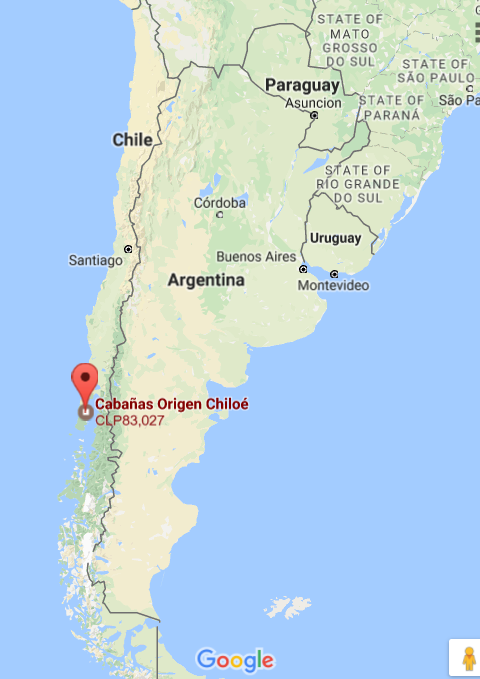This is embarrassing. I never knew until this week that penguins lived anywhere other than Antarctica and zoos. Guess what? They live here in Chiloé, too! Of course we had to go see them.
With our destination pinned in her phone, Brie and I set off for the penguin colonies of Monumento Natural Islotes de Puñihuil. The protected natural monument comprises three rocky islets just off the coast of Puñihuil in the Pacific Ocean and hosts breeding grounds for the Magellanic and Humboldt penguins. Apparently, this is the only place in the world where the two penguin species nest together.
According to the website PenguinWorld, the two birds differ physically in that the Magellanic penguin has an additional black breast band and less exposed facial skin than the Humboldt penguin. Their breeding ranges just barely overlap. The Magellanic penguin “breeds around the southern tip of South America from 40°S in Argentina to 37°S in Chile, as well as on the Falkland Islands. The largest colonies are found on the Atlantic side of South America.” The Humboldt penguin is “endemic to the Humboldt Current, breeding range extending from 5° S in Peru to 37°S in Chile, with isolated colonies existing as far as 42°S near Puerto Montt.”
Here are photos taken from PenguinWorld for comparison:
Magellanic penguin
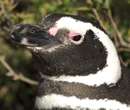
The Humboldt penguin is considered a “vulnerable species,” so it’s no surprise that we didn’t see any on our visit. However, we saw lots of Magellanic penguins, mostly just hanging out at the shoreline. Some frolicked in the water; others waddled up or down the rocky hills. They were brilliantly camouflaged, and our boat kept a respectful distance from their nesting sites, so it was hard to get a clear shot of the birds. Still, it was one of those special encounters with nature that inspires renewed wonder and curiosity about the world (hence my fall down the rabbit hole of penguin websites just now).
Heading down to the water from the parking area.
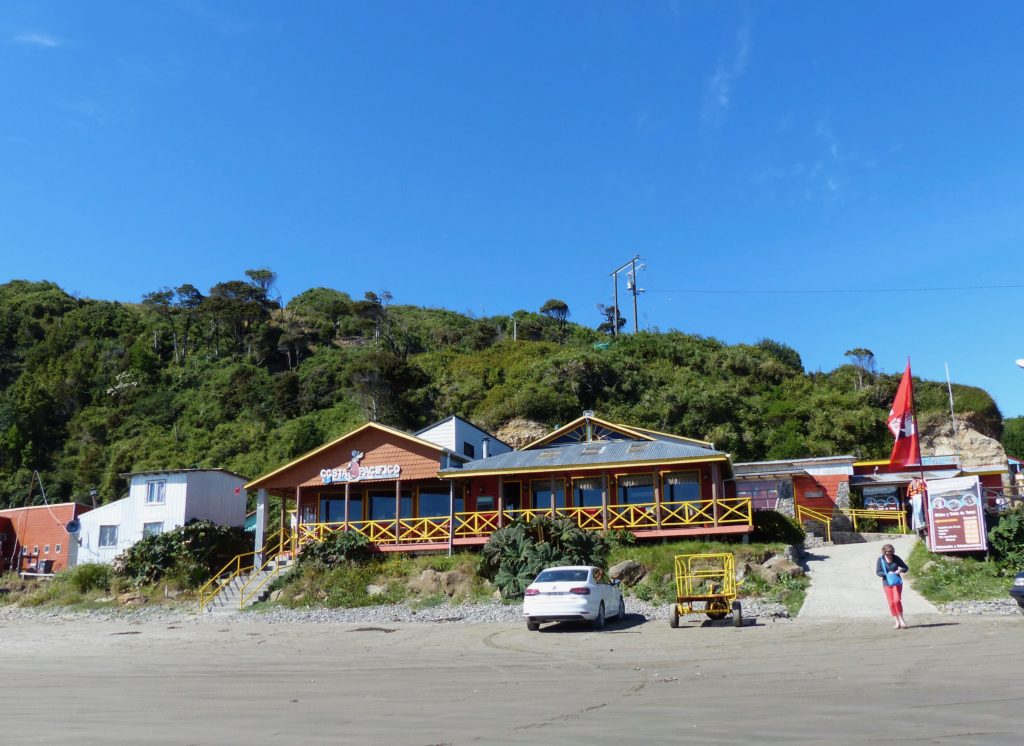
The little islands were not far offshore.
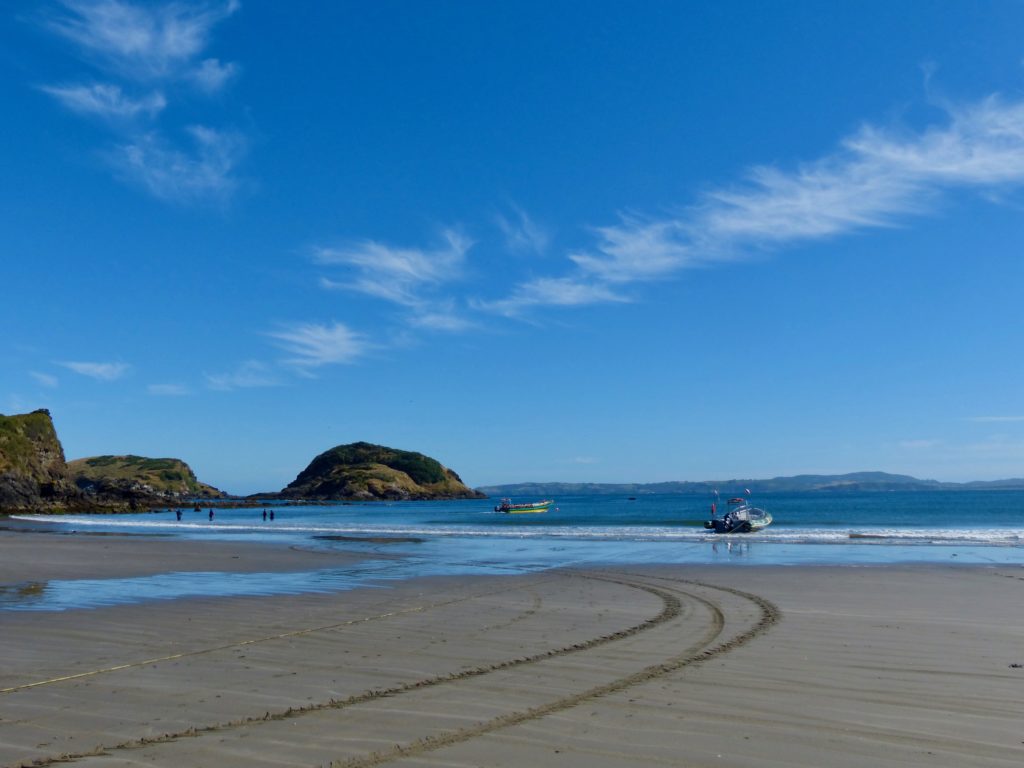
The tour operators rolled us out to the boat on this platform so we wouldn’t get wet. I don’t know why it cracked me up so much.
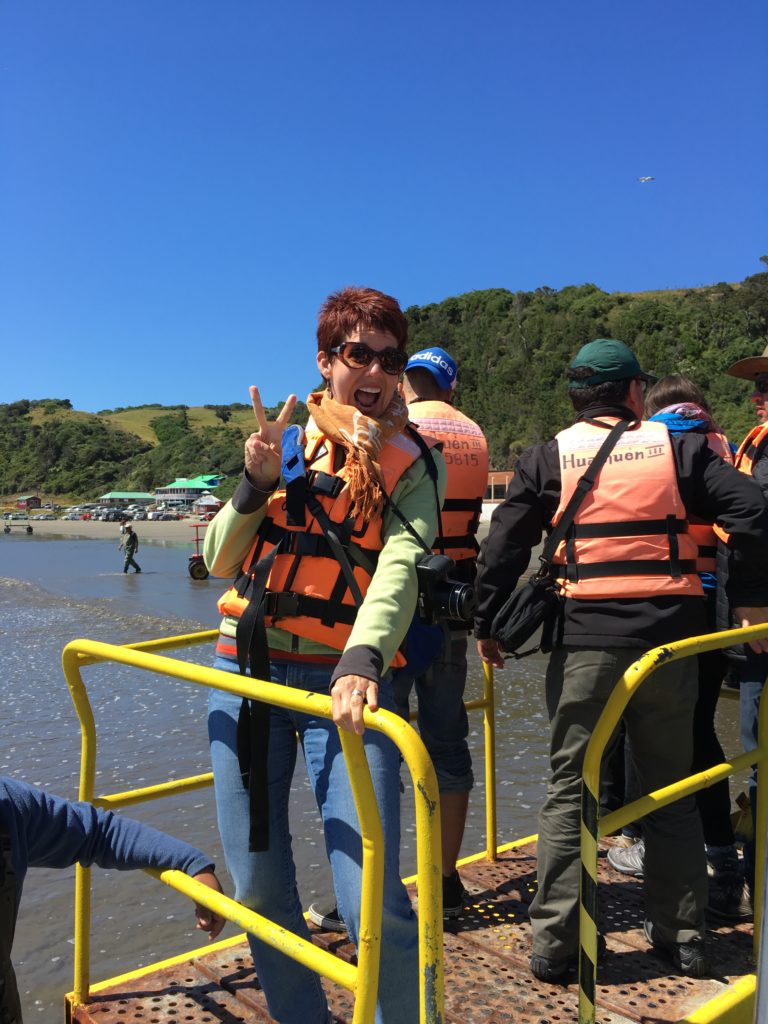
The light-colored penguins are juveniles.
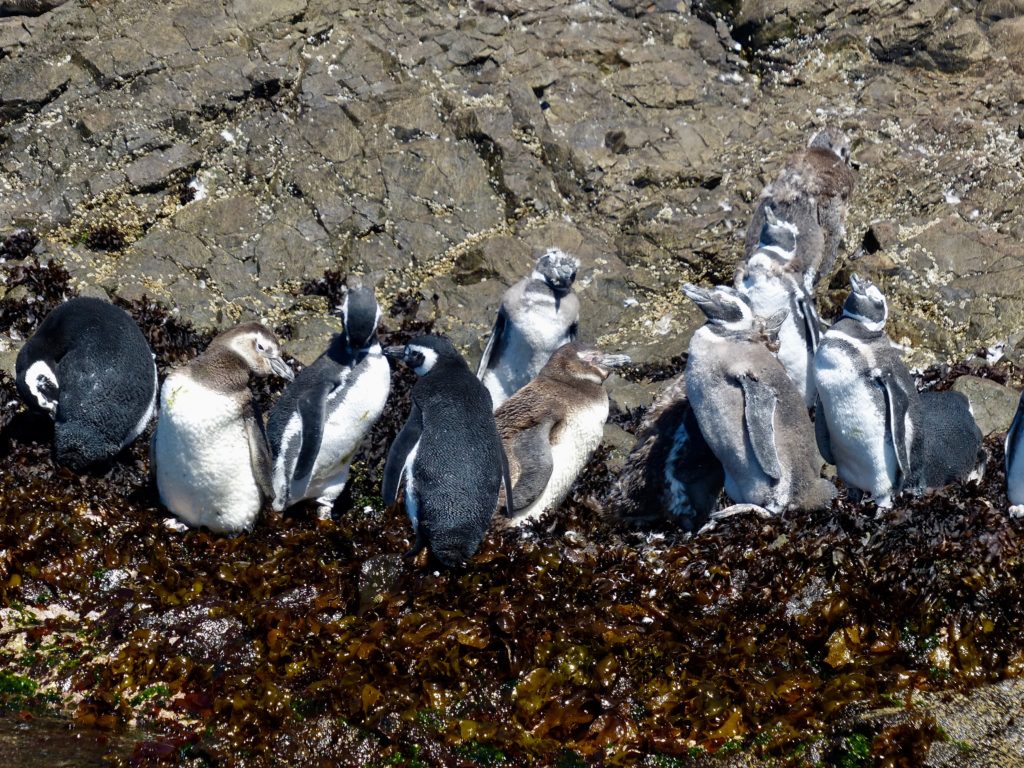
As I mentioned, Brie had this destination pinned in her phone. As a lifelong world traveler, I can hardly remember navigating unfamiliar cities or locating obscure attractions in the days before smartphones and Google Maps. Many times, I bowed down to the Google gods in profound relief and appreciation. This was not one of those times.
Google Maps got us most of the way to Puñihuil with no problem. Then, just as we realized we were about to reach the coast and a sign saying “pinguinera” pointed straight ahead, that smug voice told us to turn left. Brie took a chance and drove straight anyway, but she came to the sandy beach with a rivulet of water running down from the hills into the ocean. We both figured we weren’t supposed to drive across the beach, so Brie backtracked to the left-hand turn, and off we went on a narrow, gravelly, twisty-turny little road that ultimately took us over and around the hills … to the other side of that little beach!
We had lunch at one of the Puñihuil restaurants, overlooking the water, and then we took off for Ancud, 25 kilometers northeast. There, we walked along the waterfront and poked around a crafts market, where I bought a chunky knitted poncho. Thinking about our impending chilly winter and lack of central heat, I wanted to buy all the gorgeous wool sweaters, socks, hats, and blankets. But I restrained myself.
Back at Rucalaf for dinner, I had the grilled octopus. But the real culinary surprise of the day was the murta berry. In English, it is known as Chilean guava or strawberry myrtle. I enjoyed the berry in a cocktail and a fabulous dessert.
